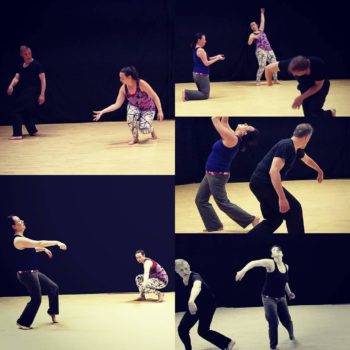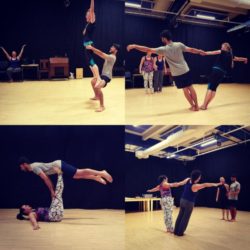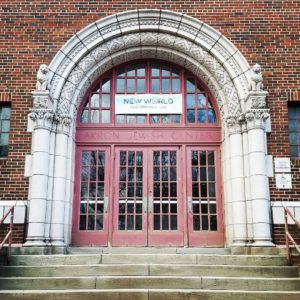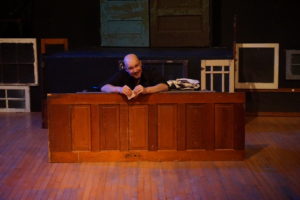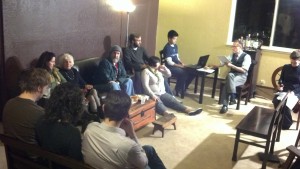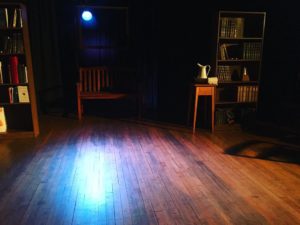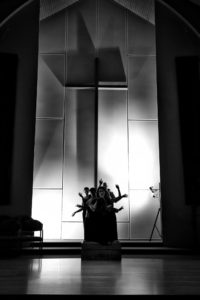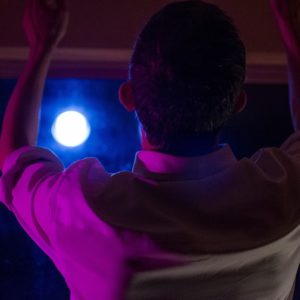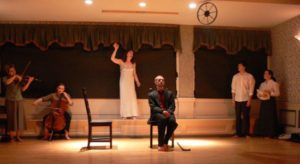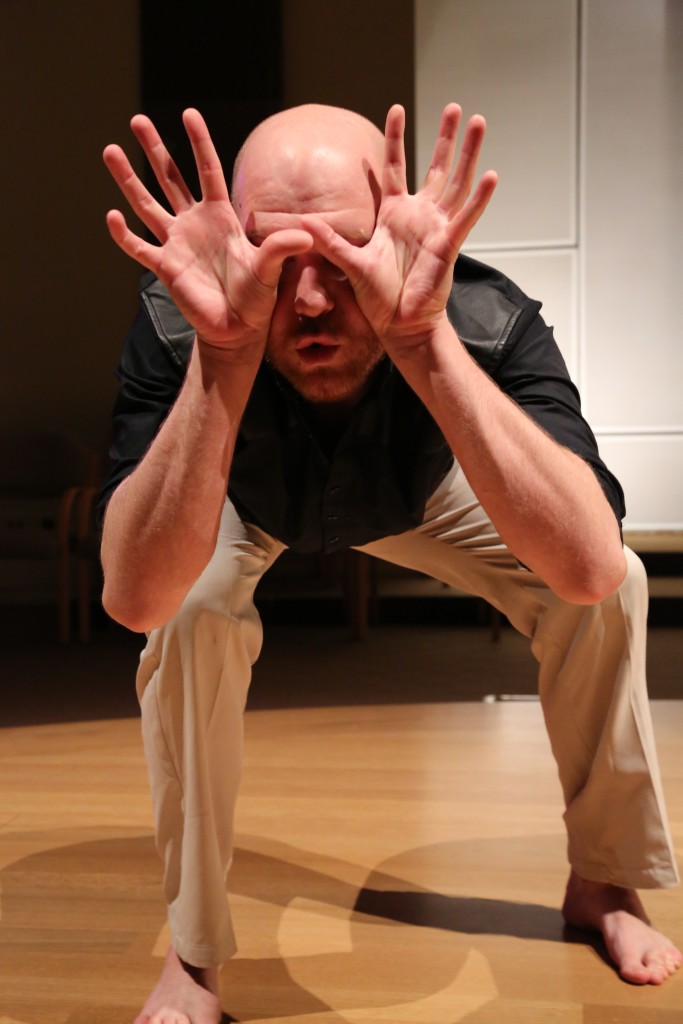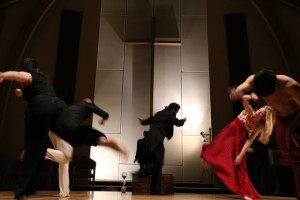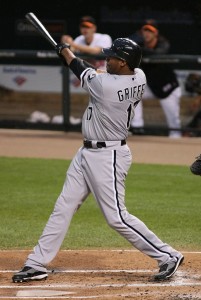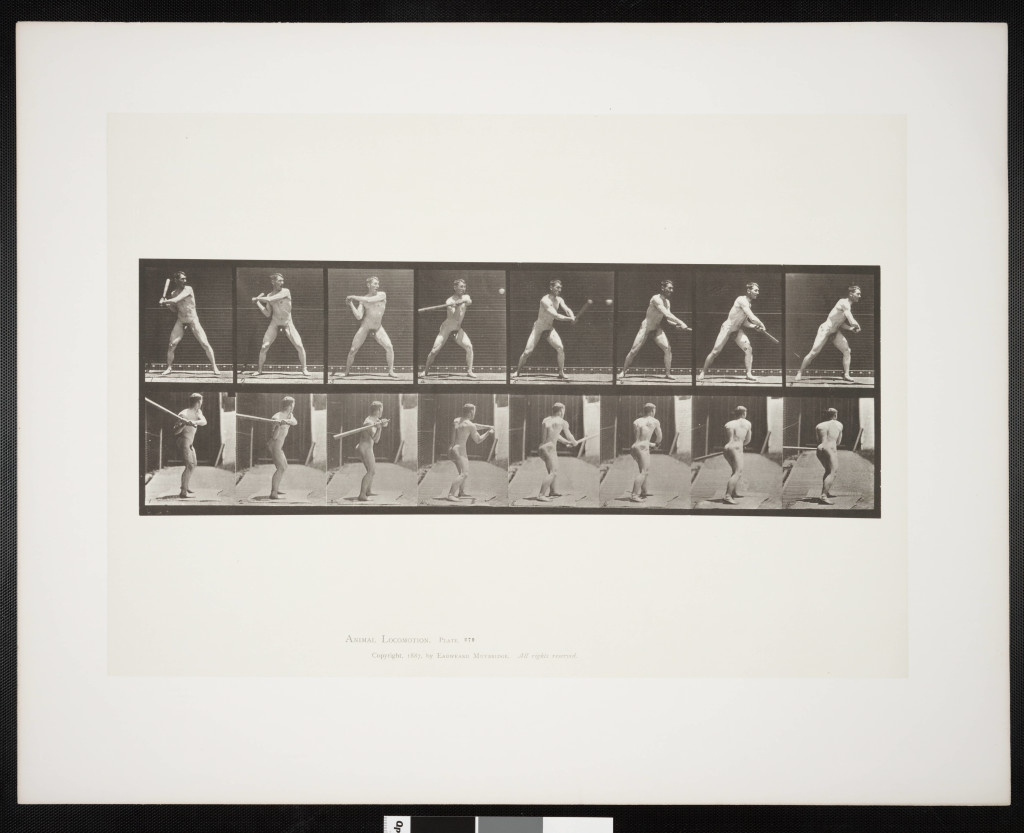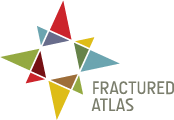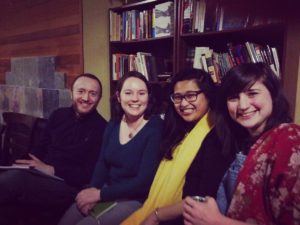
Members of Theatre Battery turned out for the 2018 NYNP Salon reading of Jessica Andrewartha’s “Choices People Make.” (L-R: Joshua Hamilton, Jessica Andrewartha, Annelih Hamilton, and Gianna Gargiulo)
APL invites submissions of new plays for a developmental reading at our 5th-Annual New Year New Play (NYNP) Salon January 27.
This call is for new plays that have not yet had a developmental reading. While we are most interested in a full-length piece, we are open to other synergies and ask current or former PNW playwrights (emerging or established) to submit their long- or short-form plays for consideration.
The play will be read by local actors at our Sunday Salon on January 27, 2019. The reading will be followed by lively, lightly moderated discussion. APL’s artistic directors provide guidance to the actors so they can bring their best creativity and engagement to the reading. We also confer with the playwright before and after the Salon, provide limited dramaturgical assistance, and offer the playwright the opportunity to frame questions for the discussion.
The Salon is an invited event focused on bringing an optimal mix of artists, intellectuals, and community members into the space to focus on your play. We also open it up to the public to attend.
We promise a rich and productive experience for the playwright. As with all APL Salons, the gathering includes great community, food, and drinks. There are no stipend or travel funds.
DEADLINE TO SUBMIT: Sunday, November 11, 2018
NOTIFICATIONS: December 17, 2018
Our selection committee provides feedback to all playwrights about their submissions. We view this as a service to fellow artists in the future evolution of their work, regardless of whether it has been selected for our Salon. If you prefer not to receive feedback from our selection committee, please indicate this on your cover sheet.
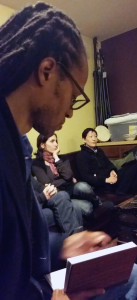
(L-R) Stacy Flood and fellow playwrights Olivia Pi-Sunyer and Ina Chang absorbing the group discussion of Flood’s “The Pleasure & Sorrow of Your Company.” | January 2015 Sunday Salon | Photo: Zhenya Lavy
TO APPLY
- Email PDF or DOC files to ensemble@akropolisperformancelab.com, with “Submission: [Title]” in the subject line.
- Along with the complete script, submit a cover sheet with your full contact information, short bio, brief synopsis of script, development history (as applicable), character breakdown, a brief statement of your hopes for how this reading might help further the play’s development, and indication of your feedback preference.
- NO FEE.
PREVIOUS NEW PLAY DEVELOPMENT SALONS
- Jan 2018: NYNP Salon selection, Choices People Make by Jessica Andrewartha, went on to win Dartmouth College’s inaugural Neukom Institute Literary Arts Award in April 2018, received a staged reading at the Dartmouth College VoxFest in July 2018, and will receive a second staged reading at the New Works Now Festival at Northern Stage in White River Junction, Vt., in January 2019.
- Jan 2017: NYNP Salon selection, Black Jesus by Tré Calhoun and John Keegan
- Jan 2016: NNYNP Salon selection, No One on Board Took Notice by Tommer Peterson
- Jul 2015: Sunday Salon, The Sound in the Next Room by John Longenbaugh
- Mar 2015: Sunday Salon, The Plague by Maurine Heberden (adapted from Camus)
- Jan 2015: NYNP Salon selection, The Pleasure & Sorrow of Your Company by Stacy Flood
- Jan 2014: Inaugural NYNP Salon selection, Fangs by Jim Moran, went on to receive a full production by Eclectic Theater, Nov 13 – Dec 6, 2014.

